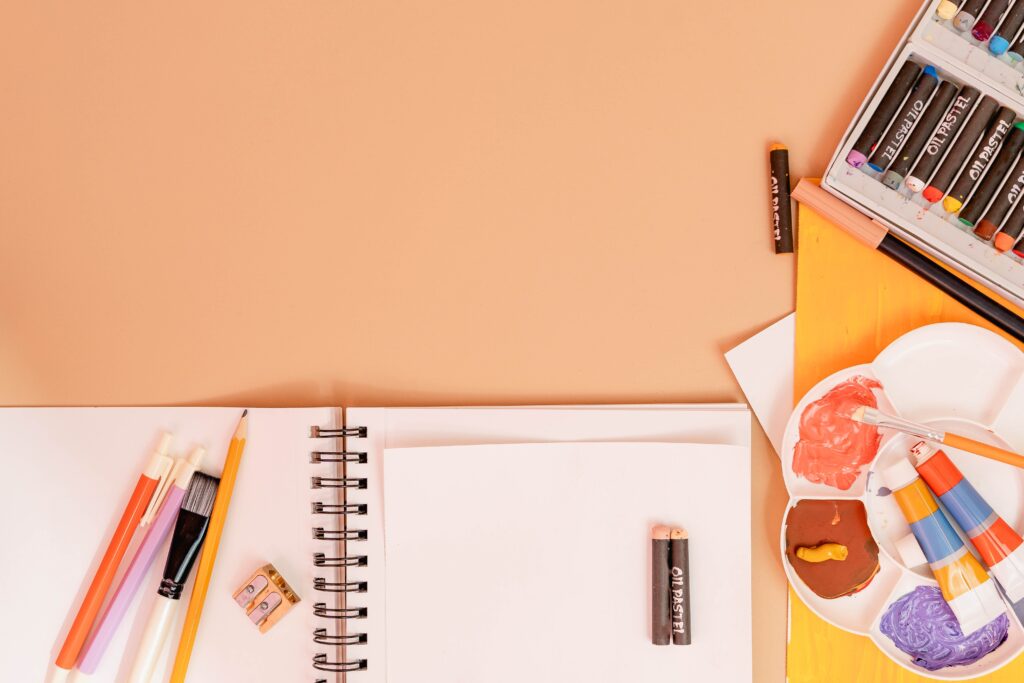If you’ve ever stared at a blank canvas, armed with a paintbrush and a creative vision, you know that art is as much about the tools as it is about the talent. But have you ever wondered where these magical instruments of self-expression came from? Well, wonder no more! Let’s take a delightful journey through time to uncover the fascinating beginnings of our favourite art supplies.
1. The Pencil: More than Just a Writing Instrument
The beloved pencil—the quintessential tool of artists, writers, and students alike – has its roots in the discovery of graphite in England, circa 1564. Initially mistaken for lead, this “black gold” proved to be an ideal material for marking sheep. Eventually, graphite sticks were wrapped in string, and later encased in wood, giving birth to the modern pencil we know and love today.
2. The Ink Pen: A Quill-iant Evolution
Long before ink pens, there were quills—stiff bird feathers with a hollow shaft that could hold ink. As early as the 6th century, quills were the go-to writing instrument, but they were far from perfect. A more user-friendly version came with the invention of the fountain pen in the early 19th century, thanks to John Jacob Parker. Then, in 1938, László Bíró patented the ballpoint pen, revolutionizing how we write and draw.
3. Paint Brushes: From Horse Hair to Synthetic Bristles
The first paintbrushes can be traced back to ancient Egypt and China, where they were made from materials like animal hair, bamboo, and feathers. Over the centuries, paintbrushes evolved—horsehair, hog bristles, and badger hair were all used to create brushes of varying quality and texture. Today, synthetic bristles offer a cruelty-free and affordable option, while natural hair brushes are still cherished for their unique properties.
4. Crayons: The Colorful World of Wax
The origin of crayons can be traced back to the Roman Empire, where wax tablets were used for writing. However, it wasn’t until the late 19th century that the first crayons as we know them – a blend of paraffin wax and pigments—were created by cousins Edwin Binney and C. Harold Smith. The Crayola brand was born, and the rest, as they say, is history.
5. An Easel: Standing Tall for the Artist
While the exact origin of the easel remains uncertain, the concept of a supportive structure for painting dates back to ancient Egypt and Greece. The easel as we recognize it today, with its adjustable height and angle, is believed to have been invented during the Renaissance, offering artists a more comfortable way to create their masterpieces.
6. Oil Paints: A Rich and Vibrant Legacy
Although the use of oils in art can be traced back to ancient times, the popularization of oil paints is attributed to Flemish painter Jan van Eyck in the early 15th century. Oil paints offered a longer drying time and a wider range of colours, allowing artists to layer and blend with ease, leading to the creation of some of history’s most iconic works.
7. Acrylic Paints: The New Kid on the Block
Acrylic paints may seem like a modern invention, but their origins date back to the 1930s when Otto Röhm developed the first acrylic resin. It wasn’t until the 1950s and 60s that acrylics gained popularity among artists, thanks to their quick drying time and versatility. Today, they are a staple in the art world, loved for their ability to mimic the qualities of oil and watercolour paints.
8. Watercolour Paints: A Splash of History
The use of watercolour paints dates back to ancient civilizations, including Egypt and China, where they were used for manuscript illustration and decorative purposes. However, it wasn’t until the 18th century that watercolour painting gained recognition as a legitimate art form in Europe. The portability and ease of use of watercolours made them a favourite of landscape painters and amateur artists alike.
9. The Paint Palette: The Artist’s Indispensable Sidekick
The paint palette has been an essential accessory for artists since time immemorial. Early palettes were made from simple materials like wood or stone, and they were used to hold and mix pigments. Today, palettes come in various shapes, sizes, and materials, including plastic, glass, and even disposable paper.
The Bottom Line
So, the next time you pick up a paintbrush or admire a work of art, remember to pay homage to the rich lineage of art supplies that have shaped the creative landscape and brought beauty into our lives.
When it comes to finding the best art supply businesses in Vancouver within the Squamish Nation, Nch’ḵaỷ can help point you in the right direction. Don’t hesitate to visit one of these amazing establishments and unleash your creativity today!


